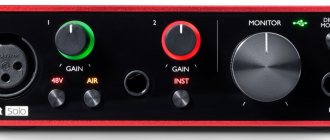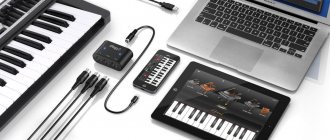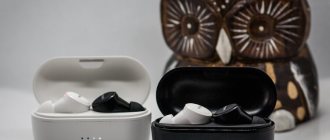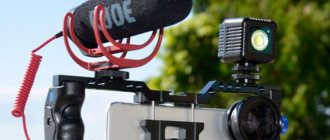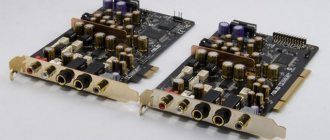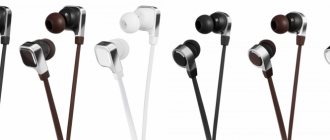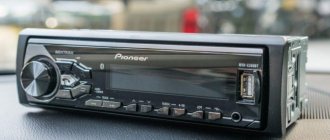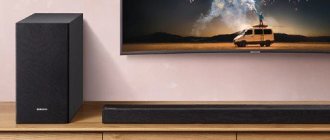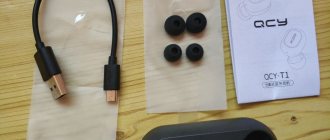It is better to buy sound cards in stores. On Aliexpress, for unknown reasons, it will always be more expensive.
Let's talk about terminology. There are different interpretations of the phrase “sound card”. It makes very little sense. Sound cards are all cards that perform any audio tasks.
Let's try to classify audio cards into groups.
There are a huge number of sound cards priced from 100 rubles. on aliexpress . So that this sound would just exist. The cheapest way to listen to audio-video content. It's really better to buy them on Aliexpress.
We don't consider them at all. Since there is nothing to discuss here.
As budgets increase, the Chinese are already making quite decent devices . Eg:
FX-audio
Sometimes Bluetooth and other things are attached to such devices. And users have the opportunity to import sound not only from a PC, but also from the entire set of devices they have at home.
Sometimes, on the contrary, they decide that the devices do not need a USB connection, and therefore do not need to connect to a computer.
It would be logical to combine all such devices into one conditional group called DACs. Which we will definitely review. But later.
In our review, we will consider sound cards, which have become known as audio interfaces.
The word audio interface is also not particularly informative. But it still implies that the device does not only output digital signals. But it can also solve many other useful household tasks. For example, they allow you to measure the frequency response. You can read how to measure the frequency response here .
How these audio interfaces differ from each other, and by what criteria it makes sense to choose them, is the subject of our article.
We will consider almost all audio interfaces sold in the Russian Federation as of mid-2022.
BEHRINGER U-PHORIA UM2.
Price is about 3500-4000 rubles.
The main advantage is the price. In this class of devices, there is nothing cheaper than BEHRINGER. At the same time, there is a microphone input with phantom power (for condenser microphones).
DAC 24 bit / 48 kHz. Retro ASIO 1.0. There is an instrumental high-impedance input. This is for various guitars. Stereo input – stereo output. Headphone output. This is all.
But at the moment the card has a problem. It does not come with drivers. And those that install Windows by default cause card noise. Both channels are at about 42 dB.
On the BEHRINGER
There are no drivers for this card! Its drivers are available on the Internet:
Driver U-PHORIA UMC22 WIN XP, VISTA, 7, 8, 10 (32 bit).
Driver U-PHORIA UMC22 WIN XP, VISTA, 7, 8, 10 (64 bit).
But the public complains that they don't always solve the problem. That is, when purchasing, you should take into account that problems may arise. At the same time, in those The noise level is not specified. OS compatibility – Mac OS X; Windows XP and higher.
There is its modification BEHRINGER U-PHORIA UMC22. Apparently it's her.
BEHRINGER U-PHORIA UMC22
But made in a different form factor. The control knobs have moved to the front panel. And ASIO became 2.0. In those. The noise level is also not indicated.
Audio interfaces. Guide to popular sound cards
Sound card, sound card, audio interface - these are all names of a device that connects your computer/phone/tablet with playback devices: speakers, headphones or professional studio monitors, as well as with various microphones and devices that produce sounds, i.e. synthesizers, guitars, etc. Interfaces have certain features. Let's deal with all the main ones in order.
First, this device helps turn zeros and ones into sound that we hear from speakers or headphones. All music that is stored or created inside your computer is digital code. The word “code” can be associated with spies who pass on incomprehensible codes to each other, something that needs to be deciphered to be understood. Any audio interface has its own decoding specialist, the so-called digital-to-analog converter or DAC. So, DACs are different: some decipher well and clearly, while others confuse the letters and even have a lisp. Audio decoding itself is a complex mathematical process, and what's more, there are different ways to convert zeros and ones into an analog signal. The DAC built into a computer is in most cases suitable for inexperienced listeners, but in audio interfaces much more attention is paid to sound quality. Different manufacturers may have different approaches, some effective and some not so effective, but in general we can say that the listening experience with a sound card will be better than with the DAC built into the computer.
Secondly, audio interfaces help us “download” sound into the computer for further processing. The process is the reverse of reproduction. For example, record voice or instruments, synthesizers, samplers and other external sound sources. Whether we've connected a microphone to sing or a cassette player to digitize a recording from the last century, we need to convert the electrical audio signal into code, and that's what an analog-to-digital converter, or ADC, does. There are several approaches to transformation, and each has its own subtleties associated with physical processes, linearity, nonlinearity and other complex scientific things.
How can you at least to some extent objectively measure sound quality without diving into the wilds?
The operating algorithms of the converters remain a secret for many even dedicated sound engineers. It is the “mathematics” of these algorithms that is the intellectual property of high-end board manufacturers. Everything is very subjective, and it’s almost impossible to say with confidence which interface sounds better.
But there are available options that will help us when choosing a card. For example, bit depth and sampling frequency in hertz. The higher the corresponding numbers, the more complex sounds the audio interface can receive, process and output. The minimum acceptable values today are 16 bits and 44.1 kHz, but we recommend 24 bits and 96 kHz so you can manipulate the audio more freely. Bit depth, for example, affects how complex operations can be performed on the amplitude (loudness) of a sound wave without harm. And a high sampling rate allows for more accurate encoding and decoding of high-frequency regions.
The remaining parameters of the converters can be studied in detail on your own, especially if you have a technical mind.
Ok, this is clear, but how will sounds get into and out of the card in general? The next thing you need to pay attention to is the number of different connectors on the audio interface. How many external audio sources can be connected simultaneously for recording? How many speakers, headphones and other devices can be connected to output sound further?
Mostly when working with audio interfaces, XLR and Jack cables
.
XLR cable
has 3 contacts. The “Male” plug is inserted into the microphone input of the interface, and the other end, “Female”, is inserted into the microphone.
¼” (6.3 mm) Jack cables
. Mono cable or TS with one ring. Typically, it is used to connect guitars or monosynths to the Line input on the interface. And the one with two rings is stereo or TRS. These are connected to the headphone output or used as a balanced mono Jack because it produces less noise than an unbalanced TS.
Let's move on to the connectors
on the audio interface itself. There are inputs (in) and outputs (out). Accordingly, inputs are used to send a signal to the interface, and outputs are used from it.
Microphone jacks
Allows you to connect microphones to the audio interface.
Typically these are XLR connectors with preamplifiers to increase the incoming signal of low-level devices to the so-called Line level. Such devices include dynamic microphones or acoustic pickups. The Line level standard is dictated by your DAW. Some preamps may distort or enhance recording quality. The Line (Instrument) connectors
accept the signal at the already required Line level. They usually connect synthesizers, guitars, amplifiers, etc. The same connectors are mainly used on output channels.
Combo connectors
. Both Jack and XLR cables can be connected to these connectors. They automatically adjust to the signal level entering them.
RCA connectors
transmit line level audio signals. In most cases, such connectors are used on output channels.
Optical connectors
Allows you to set up an ADAT connection with other ADAT-compatible devices. This standard has become quite widespread for its ability to increase the number of inputs/outputs eightfold with a digital cable.
S/PDIF connectors
another type of digital connection.
Allows you to transmit signals from digital guitar effects or audio from your mix to external, again, S/PDIF-compatible devices. MADI connectors
allow you to connect up to 64 additional audio channels via fiber optic or coaxial cables. This standard has become widespread in large audio broadcasting studios for its ability to transmit over long distances (up to 2 km).
With this knowledge, you can figure out in advance what exactly should be in your audio interface. For example: Do you sing? Requires a microphone input with an XLR connector, preamp and phantom power. Do you play electric guitar? Requires an input with a TS connector. Want to DJ? You need 2 stereo or 4 mono outputs to connect to a DJ console.
Think in advance about how much you need to record and play back, and estimate how many inputs and outputs (channels) you need. Of course, it’s better to take it “for growth”, you never know what you want to connect in the future.
It is worth mentioning the MIDI interface. Many cards have MIDI In and Out to connect different devices to sync with each other. However, if there is no MIDI on the card, do not be discouraged; almost all modern synthesizers and samplers have the ability to control via regular USB.
Of course, the audio interface itself must also somehow connect to the computer. Everything is simple here, there are USB, FireWire, Thunderbolt and Ethernet cards. PCI models that are suitable only for stationary PCs are gradually dying out, so we won’t talk about them anymore.
- USB
interfaces are the most common. This is not surprising, because everyone has USB ports. The advantage of such interfaces is the ability to use a USB bus for power. This means that such interfaces are an ideal option for mobile work. There are several different versions of USB: 1.0, 2.0 and 3.0. The higher the version, the better, as the data transfer speed increases. - FireWire
interfaces are more suitable for multi-channel work, so if you plan to record an entire musical group, we recommend taking a closer look at this option. However, this type of connection is rarely found on computers, so you may have to purchase an adapter cable.
- Thunderbolt
interfaces are perhaps the best standard. The performance of such interfaces is 8 times better than USB 3.0. However, it is important to ensure that your computer supports this protocol. - Multichannel interfaces Ethernet
specialize in networking and are used in large professional recording and mastering studios.
Major companies producing USB interfaces: Focusrite, RME, PreSonus, Audient, Novation, iConnectivity, Steinberg, Behringer, Yamaha and M-Audio.
The main companies producing FireWire interfaces are Focusrite, RME, PreSonus, and MoTU.
The main companies producing Thunderbolt interfaces are Focusrite, Universal Audio and Apogee.
The main companies producing Ethernet interfaces are Focusrite and DiGiGrid.
The port determines how much information you can simultaneously transfer between the computer and the interface. For example, if you need to record several instruments at once with 24-bit and 96 kHz quality, then a regular USB may not be enough, but FireWire or Thunderbolt will do the job.
Some additional features to consider when choosing an audio interface.
Delay
When an audio signal is sent through any interface to a DAW, there is a delay in that signal (measured in ms). This is the time it takes to traverse the entire electrical circuit on its way to or from the DAW. Typically, when lag occurs, users dig into their DAW settings to change the buffer size and other settings. However, fortunately, processor speeds have improved and latency problems are becoming less common. And with the advent of super-fast Thunderbolt, this can hardly be called a problem at all. On the other hand, such interfaces are much more expensive.
DSP
A very interesting characteristic of audio interfaces is DSP - Digital Signal Processing. Some cards have a special chip that can take on part of the audio processing load. Often, DSP effects built into a card sound better than computer ones, because the chips are designed specifically for audio processing. It is also interesting that in some cases you can completely eliminate the need to connect to a computer, that is, the card can work on its own with all connected instruments and speakers.
Front Panel Line Inputs
Some interfaces are equipped with additional line inputs on the front panel. This can be useful when recording from several sources in turn. This alleviates the need to constantly reconnect sources.
Input Level Controls
It's quite convenient to have input controls at hand. However, more often there are models in which this function is assigned to software.
Output level controls
Again, you can adjust the output signal level through a DAW or bundled software, but it is much more convenient to do this directly from the interface.
Signal indicators
Even though a distorted signal can still be heard when there is overload, it is a good idea to have visual level indicators to constantly monitor signal levels.
Lots of exits
This feature allows you to customize your workspace very flexibly. For example, you can connect 2 pairs of monitors located in different rooms.
Form factor
It’s worth saying briefly about form factors. There are desktop and rack interfaces. Tabletop ones, of course, represent an ordinary device with legs. Rack-mounted ones are aimed at studio use, where the equipment is installed in special racks. Of course, no one is stopping you from placing a rack card on the table, but keep in mind that they take up a lot of space.
However, with the advent of the mobile era, less and less attention is paid to “large” computers, and many manufacturers were forced to make support for mobile devices habitual. Many modern cards can be connected to a tablet or smartphone, and this is also worth paying attention to when choosing, maybe at some point you will want to record music through your gadget.
Any sound card has drivers and its own program for control via a computer, and this is a very important point. Some utilities are so unintuitive that understanding their settings is more difficult than writing a hit song. Be sure to read the manual, otherwise the learning process will be delayed.
Also, almost every audio interface has its own set of unique functions and solutions that significantly simplify your routine. Various buttons and controls - all this is appropriate to talk about in each specific case.
Now let’s move on to our chart, where we’ll pay attention to some features of specific models. We will arrange the equipment in descending order of quality, guided by demand statistics and our own experience.
Universal Audio Apollo
Universal Audio are renowned for their excellent plugins paired with powerful hardware DSP.
Many audio processing enthusiasts dream of devices from this company, and this is understandable. Apollo Twin MKII is a suitable desktop solution. If you have serious studio intentions, take a look at the more versatile Apollo 8 / 8p / 16 / Firewire, they have more input/output connectors and more DSP cores. The company's interfaces use a Thunderbolt 2 bus connection, which is the fastest to date. The company's products feature the industry's highest quality built-in preamps and converters. By all indicators, Universal Audio deservedly takes first place in our rating. Apollo Twin MKII Solo Apollo Twin MKII Duo Apollo 8 Quad Apollo 8p Apollo 16 MKII Apollo QUAD Firewire
FOCUSRITE Clarett Thunderbolt
Combination inputs with Clarett's new high-end preamps, derived from the ISA line, provide exceptional clarity and signature sound. Best-in-class dynamic range: 118 dB DAC and 116 dB ADC. And, of course, high-speed Thunderbolt connection. The line is represented by several audio interfaces with different numbers of channels. Clarett 2Pre Thunderbolt Clarett 4Pre Thunderbolt Clarett 8Pre Thunderbolt Clarett 8PreX Thunderbolt
Audient iD
High-performance USB audio interfaces that deliver the quality of large studio consoles in a compact, elegant desktop design.
The interfaces feature premium Audient mic preamps with phantom power, industry-leading Burr Brown conversion technology, console-style monitoring, JFET DI, and the revolutionary ScrollControl feature. A universal set of functions and an intuitive interface. Audient iD14 Audient iD44
MOTU Ultralite MK3 Hybrid
Many MOTU interfaces keep up with the leaders and are universal in every sense - they work via USB, FireWire, and even without a computer, like a digital console, thanks to the advanced DSP.
The best example is the Ultralite MK3 Hybrid model. Ableton, CuBase, Traktor, no matter what software you are working with, the card itself can additionally process any incoming and outgoing signal separately, and presets for each situation will be stored on your computer and inside the card itself. Plus, many inputs, outputs, rigid assembly and small size make this card a workhorse in any live game. MOTU Ultralite MK3 Hybrid MOTU Audio Express
Antelope Audio Zen Tour
The Zen Tour desktop audio interface connects via USB and Thunderbolt.
The device has incredible functionality and the widest possibilities for connecting various equipment. Built-in DSP based on FPGA technology allows you to apply a wide variety of effects in real time and with zero latency. The LCD touch display on the front panel provides convenient control and configuration using a simple and intuitive graphical interface. Zen Tour
Universal Audio Arrow
The Universal Audio Arrow sound card gives you the ability to professionally process vocal and guitar recordings using high-quality mixing plug-ins. The superfast Thunderbolt 3 audio interface provides a feature-rich collection of UAD plug-ins that have become the standard. Processing occurs with almost zero latency, so you can instantly record instrument parts through meticulous emulations of classic compressors, equalizers and reverbs. The result: a professionally polished mix.
Universal Audio Arrow
RME Fireface & Babyface
Fireface combines high-quality professional RME assembly and ease of operation, and the remote control makes work even more comfortable. When it comes to high sound quality and ergonomic design, people often think of the more compact Babyface Pro model. The Fireface series has several models with different in/out options.
RME Fireface UFX RME Fireface UCX RME Fireface UC RME Babyface Pro
Apogee Duet and Quartet
Riddle an experienced audio engineer about what audio interface the owner of the MAC has. At one time, it became a stereotype that since a musician is a poppy grower, that means he has Apogee Duet. And for good reason, because the card follows the Apple paradigm - it looks great, is functional and the quality is high. Duet has only two entrances, and many people missed this. Quartet solved this problem by adding a couple of additional channels.
Apogee Duet Apogee Quartet
Arturia AudioFuse
The device is built on a symmetrical audio circuit, 14 inputs and outputs, two DiscretePRO microphone preamplifiers.
Advanced transducers and timing provide incredible transparency and fidelity. Arturia AudioFuse
MOTU Track16 & Microbook IIc
Versions of compact desktop interfaces such as Forte, Babyface or Duet.
Enough connectors, DSP, FireWire and USB connectivity, and even the ability to connect other MOTU cards as expansion modules is very cool. MOTU Track 16 MOTU Microbook II
Roland Studio-Capture
The flagship from the legendary Japanese company offers 12 preamplifiers, this is for almost all input channels! For large studios, it is possible to combine two such devices into one. There are also more compact models in this series.
Roland Studio-Capture
Steinberg UR22mkII
UR22mkII has a mode for working with iOS devices, which makes it one of the best mobile interfaces in its class. Excellent sound, equally amazing build quality, 2 input channels, 2 outputs, MIDI interface - everything you need for comfortable work.
Steinberg UR22mkII
Native Instruments Complete Audio
Cards for producers from Native Instruments. Excellent assembly with proprietary software included. Easy to set up, USB-powered audio interfaces with good recording and playback quality are perfect for use in a home studio. Native Instruments Komplete Audio 6 Native Instruments Komplete Audio 2 Native Instruments Komplete Audio 1
Focusrite Scarlett 2i2 / 2i4 / 6i6 / 18i8 / 18i20 2nd GEN
A popular series of simple cards with an excellent price/quality ratio.
The number of outputs, starting from 2i4, allows you to DJ, and proprietary preamps on the inputs provide good sound quality from microphones. FOCUSRITE Scarlett 18i20 2nd Gen USB
FOCUSRITE Scarlett 18i8 2nd Gen USB FOCUSRITE Scarlett 6i6 2nd Gen USB FOCUSRITE SCARLETT 2I4 2ND GEN FOCUSRITE Scarlett 2i2 2nd GEN USB
M-Audio M-Track 2x2 / 2x2M / 8X4M
Metal-encased USB-C audio interfaces with all-new low-noise preamps and ADCs. On M models there is also a MIDI interface. The devices are perfect for creating professional, studio-quality 24-bit/192 kHz audio recordings.
M-Audio M-Track 2x2 M-Audio M-Track 2x2M M-Audio M-Track 8X4M
Presonus Audiobox
Sufficiently high-quality interfaces, the distinctive features of which are fast software with all the necessary effects, robust assembly and good preamplifiers.
Presonus AudioBox 44VSL Presonus AudioBox 22VSL Presonus AudioBox i Series Presonus AudioBox USB
Tascam US-2×2 and US-4×4
The interfaces combine excellent audio quality and ergonomic design. TASCAM Ultra-HDDA mic preamps provide up to 57dB of gain with virtually no noise or distortion. In addition to the other advantages of these interfaces, you can pay attention to the stylish militaristic design.
Tascam US-2×2 Tascam US-4×4
Zoom Tac 2 / Tac 8
A definite advantage of these cards is the high-speed Thunderbolt connection. This is especially true for the older rack model Tac 8. The devices come with excellent software with additional effects.
Zoom Tac 2 Zoom Tac 8
Behringer U-PHORIA
Budget and functional audio interfaces.
Connection and power are provided via USB. The devices are equipped with good DACs and ADCs that provide studio-quality sound. BEHRINGER U-PHORIA UM2 BEHRINGER U-PHORIA UMC22
BEHRINGER U-PHORIA UMC202 BEHRINGER U-PHORIA UMC202HD BEHRINGER U-PHORIA UMC204
Of course, we have not listed all sound cards, but only those that deserve attention. It is also worth noting that audio interfaces are found in consoles, controllers, and synthesizers with samplers. True, there they often have quite limited functions. Choose carefully and ask us if you are confused, we are always happy to help. We welcome comments and discussions.
ALLFORDJ, Moscow team.
Creative X-Fi Surround 5.1 Pro
Price is about 5000 rubles.
Creative is one of the leading sound card manufacturers. Moreover, at the dawn of sound computers, Creative even formed the first sound card standard.
But in the class of top sound cards, Creative's success has always been very modest. Creative mainly focused on a more mainstream audience and gamers.
We present this sound card due to its not entirely standard solution. Sometimes it is very convenient when the card has a full-fledged remote control. And the large volume knob is very good.
For information who is interested, the article is about remote controls for controlling any cards from a PC.
The bad thing is that it's 5.1. Someone might need this. But the linear inputs turned out to be mini-jacks.
DAC/ADC 24 bit / 96 kHz. It should be taken into account that usually for such cards in 5.1 mode the 24 bit / 96 kHz stream is divided by the total number of channels. ASIO 2.0.
In those. The data indicates compatibility with Windows XP SP2 and higher. Which sounds very strange for 2022. Apparently, the fact that the card is selling successfully is now due to the presence of a remote control.
ASUS Xonar U5
Price is about 5500 rubles.
Almost the same as Creative X-Fi, only without a remote control. The stream actually increased to 24 bit / 192 kHz. ASIO 2.0.
But mini-jacks have now become total. So why do this?
ASUS Xonar U5 has a C-Media CM6631A processor. CM9882 DAC connected to the DSP via the HDA interface. It provides line and microphone inputs, headphone output, as well as three analog audio outputs for 5.1 speaker systems. The CM9882 provides a signal-to-noise ratio of 106dB and harmonic distortion + noise of -95dB(A). On the weekend
The headphones use a separate operational amplifier, the recommended resistance is up to 150 ohms.
ASUS Xonar U7
Price is about 7500 rubles.
For those who found 5.1 not enough, they made 7.1 channels. But they heard us. Linear inputs have become tulips.
The hardware has become significantly better.
Cirrus Logic CS5361 DAC with a rated signal-to-noise ratio of 114 dB and a harmonic distortion level of 105 dB (0.0006%).
Signal processor C-Media CM6632A However, this solution does not have a significant power reserve, which is why the manufacturer does not recommend using stereo headphones with a resistance of more than 150 Ohms.
ASUS-Xonar-U7-board
Let's move on to a selection of sound cards (audio interfaces) of which you can rest assured.
We give an overview of the models from which it makes sense to choose. All these cards have obviously good sound. And they are all well made.
Most of them are produced by brands whose names mean nothing to the mass buyer of computer hardware. They are produced by companies specializing in studio equipment.
There is no particular need to describe their functionality in full. Everything is already visible when you look at them from all sides.
All of these brands have similar sound card models, but with a larger number of inputs and outputs.
Steinberg UR12
Price is about 8500 rubles.
Metal body. The Steinberg UR12 interface was introduced at the end of 2014 - this should not be scary. Sound card models last a very long time. Especially when the model itself turned out good.
STEINBERG UR12
USB 2.0 with a maximum operating mode of 24-bit / 192 kHz Yamaha D-PRE discrete microphone preamplifier with support for +48 V phantom power, operating in class A one XLR microphone input and one Hi-Z instrument TRS input, as well as a stereo line output 2 x RCA and jack for headphones/
Hardware signal monitoring with zero latency. Support for Windows and Mac OS platforms; it is also stated that it can work with iPad via the Camera Connection Kit or Lightning to USB Camera Adapter, powered via USB bus when connected to a PC or laptop. When working with an iPad, an external power adapter is required that connects to the micro-USB port. Loopback function for Internet streaming in real time.
The 24-bit 192kHz Cirrus Logic CS4270 codec is used as a converter. The specifications of the DAC are as follows: dynamic range 105 dB, Kg+noise -87 dB. The ADC data is slightly better: dynamic range 105 dB, Kg+noise -95 dB.
Mic input MIC D-PRE (balanced, XLR) Maximum input level +0 dBu Input impedance 4 kOhm Gain range +10 dB ... +54 dB Guitar input HI-Z (unbalanced, TRS) Maximum input level +8.5 dBV Input impedance 1 MΩ Gain range +/-0 dB … +40 dB Line output MAIN OUTPUT (unbalanced, RCA) Maximum input level +6 dBV Output impedance 600 Ohms Headphone output PHONES 1/2 Maximum input level 6 mW + 6 mW at 40 Ohms Power consumption 2, 5 W Dimensions 159 x 46 x 144 mm Weight 850 g
ESI U22 XT
Price is about 8500 rubles.
Has a metal body. Lacquered copper finish. The map was released in 2016.
The ESI U22 XT has separate controls for line output and headphone output. Instrumental Hi-Z TRS input.
Hardware FRONT-BACK switch. The choice of which signal to digitize - the front microphone + guitar inputs or the stereo RCA input on the rear panel.
Balanced TRS outputs, a solution initially designed more for studios.
ESI U22 XT does not require a separate network adapter and is powered from the USB bus. Very good. All you need to do is connect the cord to your computer. The interface works with phones and tablets as it supports UAC1 mode.
The TENOR TE7022L chip supports two channels and all modes up to 24-bit 96 kHz.
WM8776S stereo ADC 24 bit 96 kHz, DR 102 dB stereo DAC 24 bit 192 kHz DR 108 dB
Audiotrak Dr.Dac2 DX
It is rarely found on sale, but is one of the popular solutions. Today the DX version is sold. Based on PCM1798
, at the same time, the predecessor showed very high technical characteristics and sounded at the level of the E-MU1616m.
USB supports formats up to 24 bit and 96 kHz. Digital inputs are available in optical and coaxial versions with support for up to 24 bits and 192 kHz. The digital output is made in a coaxial version with support for 24 bits and 96 kHz. in the DAC
and headphone amplifier paths.
| Audiotrak Dr.Dac2 DX | |
| DAC | PCM1798 |
| Replaceable op-amps | Yes |
| USB support 24 bit | Yes |
| USB support 96 kHz | Yes |
| USB support 192 kHz | No |
| Availability of ASIO | No |
| Digital input SPDIF coaxial | Yes |
| Digital input SPDIF optical | Yes |
| Price | $300 |
ESI Dr.Dac Prime
The DAC
is similar in functionality to Dr.Dac2 DX, it is made on
PCM1796
, there are replaceable op-amps. USB supports formats up to 24 bit and 96 kHz. From a technical point of view, the implementation is slightly inferior to Dr.Dac2. The main difference in price is due to the presence of a 192 kHz upsampler.
| ESI Dr.Dac Prime | |
| DAC | PCM1796 |
| Replaceable op-amps | Yes |
| USB support 24 bit | Yes |
| USB support 96 kHz | Yes |
| USB support 192 kHz | No |
| Availability of ASIO | Yes |
| Digital input SPDIF coaxial | Yes |
| Digital input SPDIF optical | Yes |
| Price | $480 |
Detailed review of ESI Dr.Dac Prime
RAA Report:
Test report of the built-in amplifier ESI Dr.Dac Prime in the measurement database
Lead Audio LA 100
LA 100 is similar to Prime - the same Burr Brown PCM 1796
, but without replaceable op-amps and with USB support up to 16 bits and 48 kHz. There are coaxial and optical inputs with support for 24 bit and 192 kHz. External power is used.
| Lead Audio LA 100 | |
| DAC | PCM1796 |
| Replaceable op-amps | No |
| USB support 24 bit | No |
| USB support 96 kHz | No |
| USB support 192 kHz | No |
| Availability of ASIO | No |
| Digital input SPDIF coaxial | Yes |
| Digital input SPDIF optical | Yes |
| Price | $420 |
Music Hall DAC 15.2
Music Hall DAC 15.2 is a direct competitor to Dr. Dac Prime - uses PCM 1796
, full range of inputs, USB, coaxial and optical. Digital outputs include coaxial. Analog outputs are made unbalanced on RCA. USB input supports up to 24 bit, 96 kHz.
| Music Hall DAC 15.2 | |
| DAC | PCM1796 |
| Replaceable op-amps | No |
| USB support 24 bit | Yes |
| USB support 96 kHz | Yes |
| USB support 192 kHz | No |
| Availability of ASIO | No |
| Digital input SPDIF coaxial | Yes |
| Digital input SPDIF optical | Yes |
| Price | $500 |
Cambridge Audio DAC Magic
Cambridge Audio DAC Magic is based on two Wolfson WM8740
according to the dual mono scheme, uses a special TMS 320VC5501 DSP upsampler filter. For digital inputs, there are two pairs of digital inputs consisting of optical and coaxial inputs. USB only supports 16 bit and 48 kHz. Other digital inputs up to 24 bit and 96 kHz. Analog outputs are made of both unbalanced RCA and balanced XLR.
| Cambridge Audio DAC Magic | |
| DAC | 2*WM8740 |
| Replaceable op-amps | No |
| USB support 24 bit | No |
| USB support 96 kHz | No |
| USB support 192 kHz | No |
| Availability of ASIO | No |
| Digital input SPDIF coaxial | Yes |
| Digital input SPDIF optical | Yes |
| Price | $550 |
Cambridge Audio DacMagic 100
Compact DAC based on Wolfson WM8742
, which is the oldest of all and among all the reviewed external
DACs
and sound cards, the DacMagic 100 is the only one that uses it. According to the specifications, all inputs support 24 bit and 192 kHz, including USB, two coaxial and one optical. ASIO support declared. There is a switchable grounding isolation.
| Cambridge Audio DAC Magic | |
| DAC | WM8742 |
| Replaceable op-amps | No |
| USB support 24 bit | Yes |
| USB support 96 kHz | Yes |
| USB support 192 kHz | Yes |
| Availability of ASIO | Yes |
| Digital input SPDIF coaxial | Yes |
| Digital input SPDIF optical | Yes |
| Price | $460 |
FOCUSRITE Scarlett Solo 3rd Gen
The price is about 10,000 rubles.
FOCUSRITE Scarlett Solo 3rd Gen
The body is made of a strong solid aluminum profile.
The FOCUSRITE Scarlett Solo 3rd Gen sound card is the next update to the popular series of audio interfaces.
Two input connectors: XLR (with the ability to supply +48V phantom power for condenser microphones) and instrument TRS. There is an output for connecting headphones and a three-color indication of signal level and overload. There is also the ability to monitor audio with zero latency. Balanced TRS outputs are located on the back of the case.
AIR mode, which emulates the operation of microphone preamplifiers with a transformer input. AIR mode can be turned on or off.
Connection to a computer is realized using a high-speed USB-C bus. An external power supply is not required, which will be especially convenient when traveling.
The software included is: Avid Pro Tools First, Ableton Live Lite, XLN Audio Addictive Keys, Softube Time and Tone Bundle, Focusrite Red Plug-in Suite.
| Mode support | 44.1, 48, 88.2, 96, 176.4, 192 kHz |
| Dynamic range | 111 dBA |
| Kg+noise | <0.0012% |
How to connect an audio interface to a computer
This is usually a simple task, but computers are computers and sometimes things can go awry if the steps are done in the wrong order. To avoid grief and teeth grinding, follow this step-by-step guide:
- Quit all applications
- Back up your system (you do this regularly anyway, right?)
- Reboot your system (this may not be entirely necessary, but it will give your 'pooter' a fresh start).
- Connect your interface to your Mac/PC using the appropriate connection. If you have several options, choose the one that has the highest throughput.
- Install all necessary drivers. This usually happens automatically, but you may need to download the latest driver from the manufacturer's website.
- Make sure your monitors/speakers are turned off. Connect them to the main stereo output of the interface.
- Launch your DAW or recording software. Specify the program's input and output to route to your shiny new audio hardware.
- Check if it works! Play back the last masterpiece you worked on and then...
- Connect microphones and/or instruments to the interface inputs.
- Test the input signal by recording something through each channel.
- Celebrate by dancing. I recommend dancing, but beware of microphone stands or instruments in close proximity.
PreSonus AudioBox iOne
The price is about 10,000 rubles.
PreSonus has been developing professional audio equipment for over 20 years. The PreSonus AudioBox iOne audio interface works on Mac, Windows, and is compatible with Apple iPad.
The device chassis is made of metal. Power is provided via USB, so there is no need to use external adapters.
Class A preamplifier and DAC/ADC supporting modes up to 24-bit/96 kHz. The front panel contains: an XLR microphone input, a TRS instrument input, a +48V phantom power switch, a Direct key for zero-latency audio monitoring, as well as an output volume control knob and a headphone jack with separate output level control.
On the back of the case there are two unbalanced TRS output connectors, a USB connector for connecting to a PC or MAC, and an MFi port for connecting to an iPad.
The proprietary Studio One Artist software is included, and the Capture Duo program is provided for use with the iPad.
Mackie Onyx Artist
The price is about 10,000 rubles.
The case of the Mackie Onyx Artist USB audio interface is made of aluminum, which has a very positive effect on its resistance to external interference and mechanical damage.
Supports 24 bit/192 kHz mode. On the front panel there are XLR and TRS connectors, keys for activating zero-latency monitoring and turning on +48V phantom power.
There is a headphone output with separate volume control, a convenient indication of overload and the presence of a signal at the input, and the handles are equipped with additional rubber pads - they are very convenient to use. On the rear side there is a pair of TRS output connectors.
The sound card is connected to the computer via USB; no external power supply is required. The audio interface is equipped with DAW Tracktion T7 and a set of plug-ins for audio signal processing.
What is an audio interface?
Simply put, an audio interface is a device that connects to your computer and allows audio input and output. Every computer has an audio interface (sometimes called a sound card); It's the reason why you hear the tinkling noise every time a cute dog video appears on YouTube. It allows people to listen to you during a Zoom call through a microphone that picks up the audio. But the sound card in your computer was designed for personal use, not quality audio, and so the rise of the external audio interface began.
In more detail, these magical little boxes take analog signals and convert them into digital audio that your DAW software can understand. They also perform the same process in reverse so you can play the recording on external monitor speakers.
Most audio interfaces include line level inputs and outputs and microphone preamps. Additional features may include digital outputs and inputs, midi in/out, and “combo jacks”; inputs allowing you to connect XLR or 1/4″.
Roland Rubix22
The price is about 10,000 rubles.
On the front panel of the Roland Rubix22 there are two combined XLR-TRS inputs, a headphone output with a separate volume control, and a +48V phantom power switch.
The rear panel houses MIDI connectors, a zero-latency direct monitoring switch, a Ground Lift switch, and two balanced TRS outputs. The interface supports operation in modes up to 24 bit/192 kHz, is compatible with Windows, MacOs, and can also work with iPad. Power is supplied via USB or from an external adapter. The package also includes Ableton Live Lite.
Questions and answers on audio interfaces
For all those who missed this article, and for those who read to the end, we offer answers to some common questions about the interface...
Is a mixer an audio interface?
Can. Some mixers do have the ability to connect to a computer, but they will specifically state that they are both a mixer and an audio interface. An example is the Behringer Xenyx Q502.
Is it worth purchasing an audio interface?
If you want to record production-quality audio, then absolutely yes. Yes, there are stories of people recording vocals on an iPhone and using that recording to create a track. But at some point in your musical journey, you'll probably want to invest in an interface. And entry-level models are specifically designed to not break the bank.
Do I need an audio interface if I'm not recording?
If all your music is based on software and you know how to mix on headphones, then technically you don't need one. But if you want to hear what your latest tune sounds like on your monitors, you'll need an audio interface with speaker outputs.
What are the outputs on an audio interface for?
The simplest models use these outputs to connect to studio monitors so you can hear what you're working on. As you move up the audio food chain, you may have more options, such as sending the signal to a set of speakers in a separate monitoring booth or to external equipment for external processing.
Can I connect an audio interface to a TV?
Technically, you can connect the output of your TV to the input of your interface. But again, why do this? Stop watching TV and make music!
Can I connect an audio interface to my phone?
Just a few years ago the answer would have been no. But today there are many specialized interfaces that connect to iPad and iPhone. Android users have fewer options, but they still have them, such as the IK Multimedia iRig PRO I/O.
Can you use a DAW without an audio interface?
Certainly! You can use the headphone jack on your laptop or Mac/PC to monitor what you're doing. If you need to record external sources, you can use a USB microphone to do so. And almost all dedicated midi controllers can connect directly to your DAW via USB.
Can the amplifier be used as an audio interface?
I will answer “no” because at the moment it is not possible. But who knows what the future holds for us? Perhaps in a few years there will be an amplifier that can talk to your DAW and handle multiple input channels.
What can I use instead of an audio interface?
You can simply use your computer's built-in output to listen to the output of your DAW, although I highly recommend using headphones rather than relying on the internal speakers. You can use a USB microphone to record external audio—there are some great options, such as the Rhode NT-USB condenser microphone.
Does the interface affect the sound quality?
In a word, yes. Both at the entrance and at the exit. Even the simplest interface will be a big improvement over your computer's internal sound card. The higher the price tag (usually), the better the mic preamps and converters for converting analog to digital and vice versa, and the higher the sound quality.
What is the difference between a cheap and expensive audio interface?
First, let's say budget, not cheap... Lower-end models have fewer input and output options and record at lower sample rates. They also may not have balanced line inputs (which can lead to annoying ground loops) or zero-latency monitoring. More expensive interfaces are more geared toward professional recording, so can record multiple instruments simultaneously, may include a built-in DSP or two, or have the ability to software mix before hitting the DAW.

